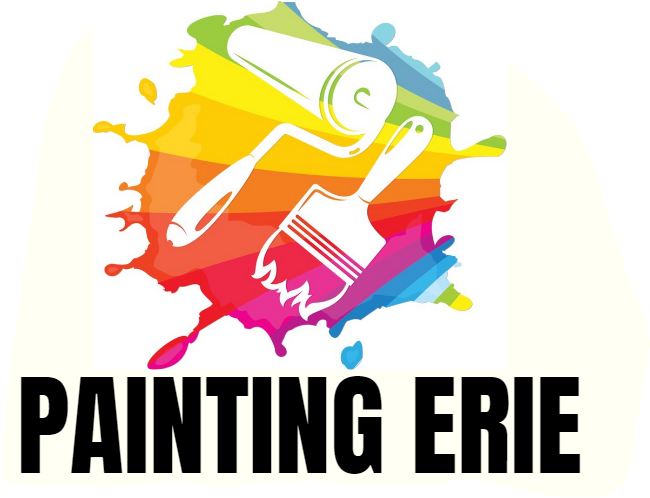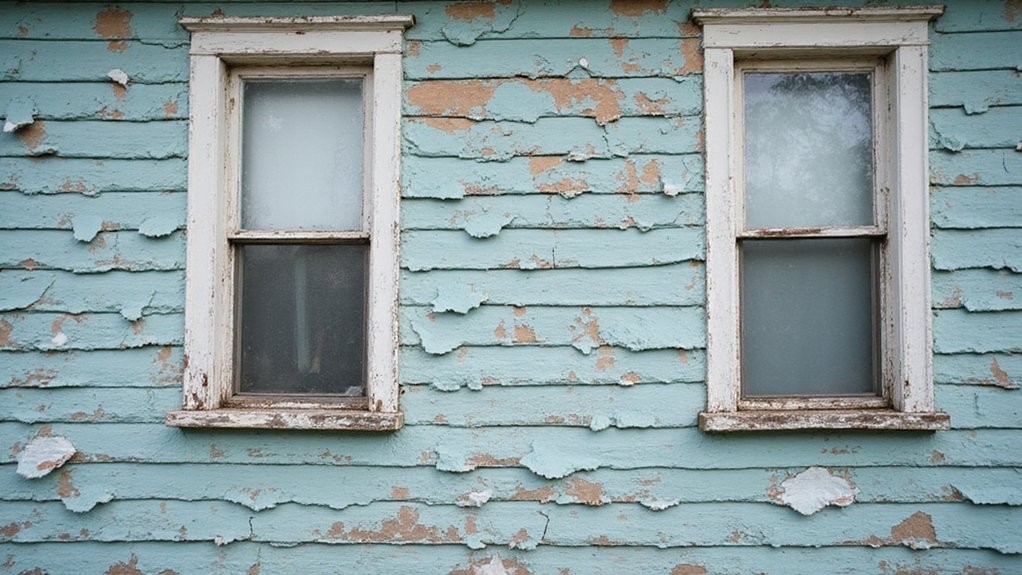As you step out into Erie’s unpredictable weather, you’re not just bracing yourself for the elements – you’re also exposing your home’s exterior to a unique set of challenges. The city’s extreme climate, marked by scorching summers and freezing winters, takes a toll on your exterior paint. UV radiation, freeze-thaw cycles, and heavy snowfall all contribute to a perfect storm of degradation. But what exactly happens to your paint when it’s subjected to these harsh conditions, and how can you protect it?
Scorching Summers and the Effects of UV Rays
As you expose your home’s exterior to the scorching summer sun, the intense ultraviolet (UV) rays begin to wreak havoc on your exterior paint. Direct sunlight exposure can cause heat-related discoloration, leading to an uneven, faded appearance. UV rays break down the paint’s molecular bonds, causing it to degrade and lose its vibrancy.
This can lead to a range of issues, from minor color shifts to significant paint failure. If you don’t take steps to protect your exterior paint, it can deteriorate rapidly, leaving your home looking worn and weathered. In extreme cases, UV damage can even compromise the paint’s adhesion, causing it to peel or flake off. Quality exterior paint can help reflect UV rays and mitigate some of the damage caused by prolonged sun exposure.
Freezing Winters and the Consequences of Ice and Snow
While scorching summers are notorious for their destructive effects on exterior paint, freezing winters pose a distinct set of challenges that can be just as damaging. As a homeowner in Erie, you’re likely familiar with the harsh winter conditions that can wreak havoc on your home’s exterior. Freezing temperatures and moisture accumulation create an environment where paint damage can thrive.
Here are three ways freezing winters can impact your exterior paint:
- Freeze-thaw cycles: Water seeps into small cracks and crevices, freezing and expanding as temperatures drop. As the ice thaws, it can leave behind gaps and cracks that allow more water to seep in, perpetuating a cycle of damage.
- Moisture accumulation: Snow and ice can trap moisture against your home’s exterior, leading to prolonged exposure to water. This can cause paint to peel, flake, or blister, compromising its protective barrier.
- Surface erosion: Harsh winter winds and ice can erode your home’s exterior surface, wearing away the paint and exposing the underlying material to further damage.
To combat these issues, it’s crucial to use weather-resistant paints that are specifically designed to withstand Pennsylvania’s dynamic weather conditions.
Humidity’s Hidden Dangers
Excessive humidity is a silent destroyer of exterior paint, and as a homeowner, you’re likely unaware of the hidden dangers lurking beneath the surface. Erie’s humid summers can cause condensation concerns, which lead to water seeping into the paint’s substrate, weakening its adhesion and causing peeling or blistering.
This creates an ideal environment for mold growth, compromising the paint’s integrity and your home’s curb appeal. To mitigate these risks, it’s crucial to confirm proper surface preparation, including cleaning and drying the substrate before painting. Additionally, consider using a mold-resistant paint and applying a waterproof coating to protect your exterior paint from humidity’s hidden dangers.
Lake-Effect Precipitation and Its Impact on Paint
Nearly 30 inches of precipitation fall on Erie every year, with a significant portion of it coming from lake-effect snowfall. As a homeowner, you’re likely aware of the importance of exterior paint in protecting your home from the elements. However, you may not realize the impact that lake-effect precipitation has on your paint’s longevity.
Lake-effect precipitation leads to:
- Moisture accumulation: Excess water can seep into your home’s exterior, causing paint to peel, flake, or blister.
- Efflorescence development: Mineral deposits can form on your home’s surface, discoloring your paint and damaging its integrity.
- Accelerated weathering: The constant barrage of snow, ice, and rain can cause your paint to degrade faster, reducing its effectiveness in protecting your home.
Thermal Expansion and Contraction: The Silent Paint Killer
As you work to protect your home from the harsh effects of lake-effect precipitation, it’s equally important to ponder another silent threat to your exterior paint’s longevity: thermal expansion and contraction. This phenomenon occurs when your home’s exterior materials, such as wood and vinyl, expand and contract with temperature fluctuations.
This movement can cause your paint to flex, compromising its adhesion to the surface. As a result, moisture can seep behind the paint, leading to moisture intrusion and further damage. Thermal expansion and contraction can be particularly problematic in Erie’s climate, where temperatures can swing dramatically between seasons.
To mitigate this effect, it’s pivotal to choose a high-quality paint specifically designed to accommodate thermal movement, ensuring a strong bond between the paint and your home’s exterior surface. By doing so, you’ll be better equipped to protect your home from the silent threat of thermal expansion and contraction.
Wind and Weathering: How Erie’s Gusts Affect Your Home’s Exterior
While your home’s exterior paint is battling the silent threat of thermal expansion and contraction, it’s also facing another formidable foe: wind and weathering. Erie’s gusty winds can wreak havoc on your home’s exterior, causing dust accumulation and temperature fluctuations that can shorten the lifespan of your paint job.
Here’s how wind and weathering impact your home’s exterior:
- Dust accumulation: Windborne dust particles settle on your home’s exterior, creating a rough surface for paint to adhere to. This can lead to peeling, flaking, and fading.
- Temperature fluctuations: Wind can cause rapid temperature changes, which can stress your paint and cause it to crack or fade.
- Moisture infiltration: Wind-driven rain and snow can seep into cracks and crevices, causing water damage and paint failure.
Seasonal Shifts and the Importance of Adaptation
Erie’s unpredictable climate means your home’s exterior paint must adjust to seasonal shifts, which can be just as unforgiving as wind and weathering. As you know, seasonal changes bring changing temperature patterns and fluctuating precipitation levels, affecting your paint’s performance.
In the summer, high temperatures and humidity can cause paint to fade, while winter’s freezing temperatures and snow can lead to cracking and peeling. Spring’s thaw and autumn’s moisture fluctuations can also take a toll on your exterior paint.
To guarantee your paint job lasts, it’s critical to choose a paint that can adapt to these seasonal shifts. Look for paint with high-quality ingredients and a durable finish that can withstand Erie’s unpredictable climate. By doing so, you’ll be able to enjoy a beautiful, long-lasting exterior that complements your home’s unique character.
Frequently Asked Questions
Can I Use Interior Paint on My Home’s Exterior?
You shouldn’t use interior paint on your home’s exterior, as it’s formulated for dry, climate-controlled spaces, not exposure to the elements, which can lead to paint adhesion issues and moisture penetration concerns, compromising the paint’s performance and longevity.
How Often Should I Inspect My Exterior Paint Job?
You should inspect your exterior paint job regularly, ideally with seasonal inspections, to catch any damage or wear early on. Consider scheduling professional evaluations every 5-7 years to identify potential issues before they become major problems.
Do Certain Colors Last Longer Than Others in Erie’s Weather?
You’ll find that certain paint colors, particularly those with higher pigmentation, tend to last longer in Erie’s climate, while matte finishes and rougher surface textures can degrade faster due to increased UV exposure and moisture absorption.
Can I Paint Over Existing Paint Without Preparing the Surface?
You can’t skip proper surface preparation when painting over existing paint, as it raises paint adhesion concerns. Guarantee a robust bond by cleaning, scraping, and sanding the surface, then applying a primer for a durable, long-lasting finish.
Will a High-Quality Paint Guarantee a Longer Lifespan?
You’ll find that a high-quality paint can substantially extend lifespan, but it’s not a guarantee, as paint quality considerations alone can’t overcome environmental factors that influence degradation, such as UV exposure and moisture.

